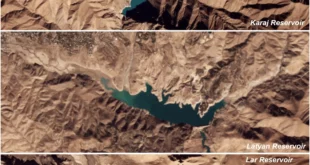The Afghan government is unable to administer 64 districts from the district centers, according to a recent survey. The 64 districts, which are located in 19 of Afghanistan’s 34 provinces, are either being administered remotely, or the district centers have been moved due to heavy fighting with the Taliban. The data track with an ongoing analysis of the security situation in Afghanistan’s districts by FDD’s Long War Journal.
The fact that a district cannot be administered from its district center is a clear indication that the government cannot control the district.
The information was gathered by TOLONews, which conducted a survey of the district governors. The names of 20 of the 64 districts which cannot be administered from its center were identified.
According to the survey, Faryab province takes the lead, with 9 of its 15 districts out of government control. Unfortunately the report did not name the 9 districts. However, this closely tracks with LWJ‘s analysis: 5 districts are Taliban controlled and 6 are contested.
Ghazni is next, with 8 districts outside of government control. Again the report did not name the districts. LWJ’s analysis indicates that 11 of Ghazni’s 19 district are Taliban controlled and the remaining 8 are contested. Note that The New York Times first reported on this phenomena in Ghazni; in Aug. 2017 it noted that 7 districts were being governed from Ghazni City. [Also see LWJ report, Resolute Support obscures status of 7 Ghazni districts as 3 more fall to Taliban.]
Helmand and Farah are next, with 7 districts each that cannot be administered properly. Again, the districts were not named in the report. LWJ’s reporting indicates that 6 of Helmand’s 13 districts are Taliban controlled, and the other 7 are contested; and 4 of Farah’s 11 districts are Taliban controlled, and 6 more are contested.
The TOLONews report named 20 districts that are out of government control: 4 in Kandahar, 4 in Paktika, 4 in Kunduz, 3 in Baghlan, and 3 in Zabul. LWJ updated the status of 13 of these 20 districts from contested to Taliban controlled based on the data.
Again, the survey tracks closely to LWJ‘s analysis of the security situation in Afghanistan’s districts. The new information puts LWJ‘s numbers at 63 districts under Taliban control, 1 district unconfirmed Taliban controlled, and 193 district contested. This means that nearly 16 percent of Afghanistan’s districts are Taliban controlled, and 47 percent are contested.
Resolute Support Mission, NATO”s command in Afghanistan, and the US military ceased reporting on the security situation in Afghanistan’s districts in the fall of 2018. The two organizations claimed that the reporting was not indicative of progress in Afghanistan, and said that so-called peace talks with the Taliban was the real measure of success. However, the military’s own reporting showed a slow but sure deterioration of security in Afghanistan’s districts, which countered its narrative of success.
 Eurasia Press & News
Eurasia Press & News


